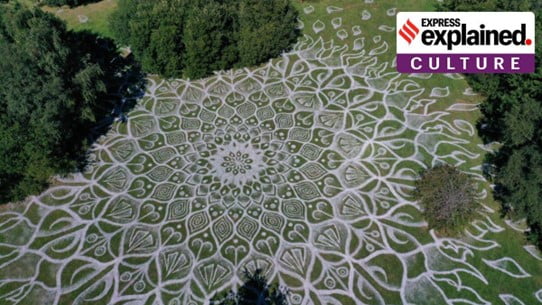History and Art and Culture
What is mandala and its origins:
- Literally meaning “circle” or “centre” in Sanskrit, mandala is defined by a geometric configuration that usually incorporates the circular shape in some form.
- It is believed to be rooted in Buddhism, appearing in the first century BC in India.
- In Hinduism, the mandala imagery first appeared in Rig Veda (1500 – 500 BCE).
The meaning of the motif:
- It is believed that by entering the mandala and moving towards its centre, one is guided through the cosmic process of transforming the universe from one of suffering to that of joy.
- The eight spokes of the wheel (the dharma chakra) represent the eightfold path of Buddhism (practices that lead to liberation from rebirth), the lotus flower depicts balance, and the sun represents the universe.
- In Hinduism, a mandala or yantra is in the shape of a square with a circle at its centre.

Mandala in modern Indian art:
- While it continues to appear in thangka paintings, it has a central place in the practice of mainstream artists associated with the tantric and neo-tantric spiritual movements.
- In 1960s Sohan Qadri and Prafulla Mohanty gained widespread recognition for their works that were imbibed with tantric symbolism, such as mandalas that are also used in the rituals of tantric initiation.
- Geometric compositions also dominated works of artists such as Biren De, GR Santosh, Shobha Broota, and famously SH Raza, who visualised the Bindu as the centre of his universe and the source of energy and life.
Source: Indian Express
Previous Year Question
Q.1) With reference to the history of India, the terms “kulyavapa” and “dronavapa” denote (2020)
- measurement of land
- coins of different monetary value
- classification of urban land
- religious rituals











